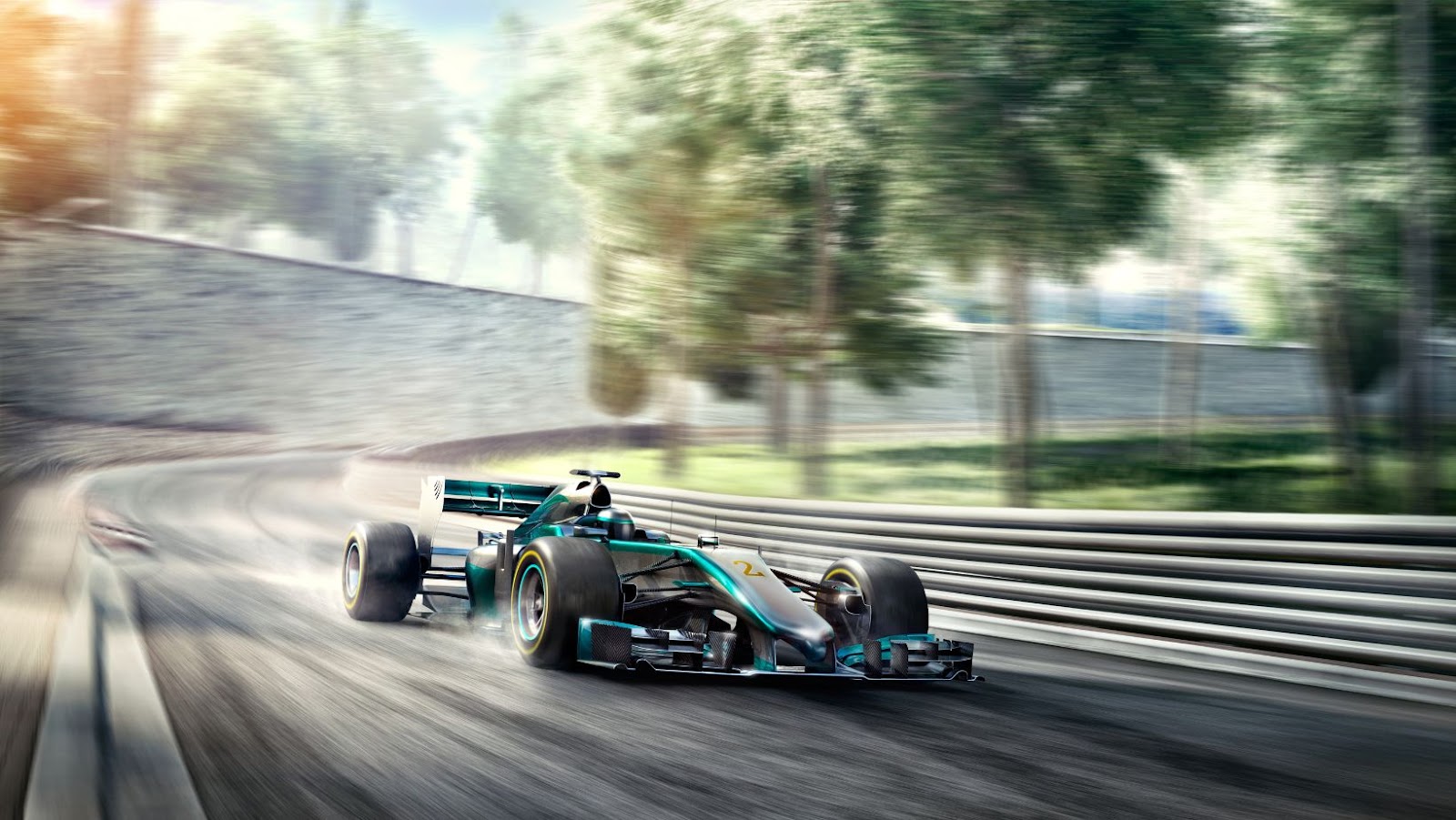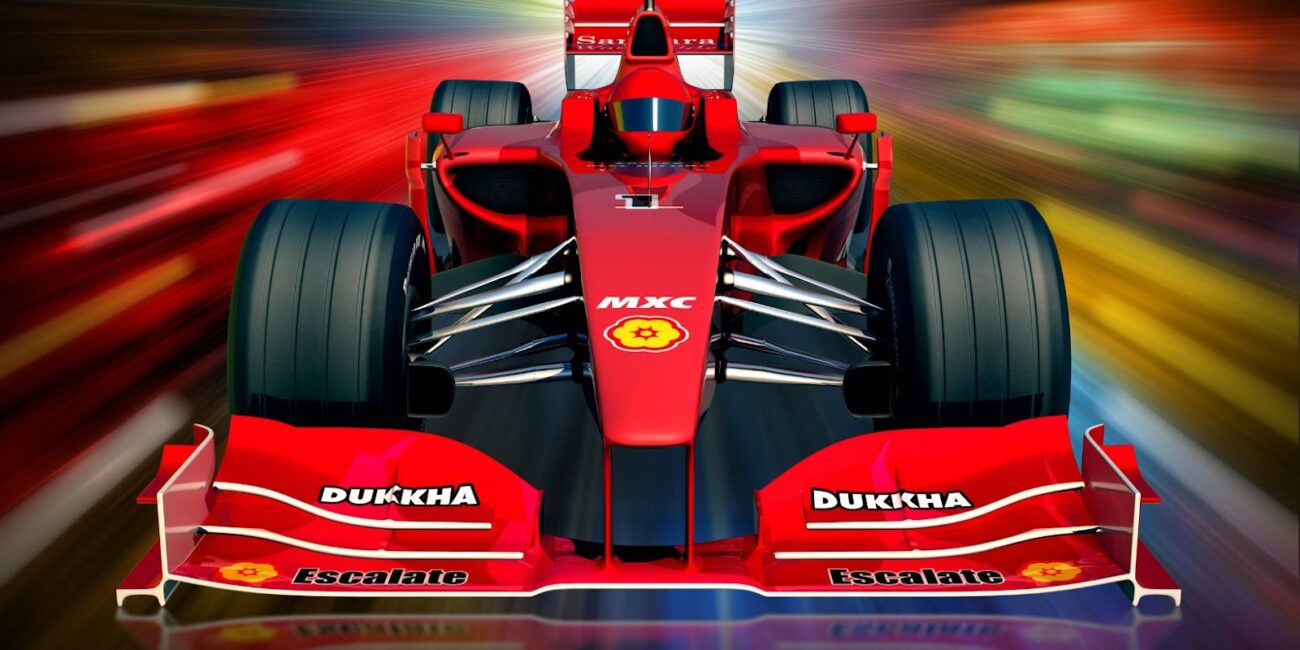Introduction To Formula 1 Cars
As the pinnacle of motorsport, Formula 1 cars provide an unrivaled experience both on and off the track. These high-performance machines are designed to incorporate cutting-edge technology and push the boundaries of what is possible in automotive engineering. From their aerodynamic designs to their advanced engines and tires, every element works together seamlessly to create a powerful and exciting driving experience.
To truly appreciate the wonders of Formula 1 cars, it is essential to understand how they travel at such high speeds. One key factor is their aerodynamics, with complex designs that maximize downforce while reducing drag. This allows them to corner at incredible speeds without losing traction or stability.
Another vital aspect is their engines, which generate immense power while maintaining incredible efficiency. Formula 1 cars use highly advanced hybrid powertrains that combine electric motors with traditional gasoline engines. The result is a system that produces over 1000 horsepower while meeting strict emissions regulations.
It’s also important to note the critical role played by tires in achieving top performance. Formula 1 teams use specialized tires designed to provide maximum grip and allow drivers to push their cars to the limit on any surface.
Pro Tip: Watching a race from multiple vantage points will give you a deeper appreciation for the skill required by drivers and engineers alike to make these incredible machines perform at their best.
Formula 1 cars have so many unique components that even a mechanic might need a cheat sheet just to keep up!
Components Of Formula 1 Cars
To understand the inner workings of Formula 1 cars and how do they travel, you’ll delve into a section that focuses on the various components of these powerful machines. This section will cover the different aspects of Formula 1 cars, including the aerodynamics, engine and powertrain, suspension and braking systems, and safety systems.
Aerodynamics of Formula 1 Cars
For a Formula 1 Car to move at high speeds, under different track conditions and terrains, aerodynamics play a crucial role. Every component of the car is designed to minimize drag and maximize downforce. Below is a table showing the essential components of aerodynamics for a Formula 1 Car:
| Component | Description |
| Front Wing | Helps with steering and balance during tight turns |
| Rear Wing | Generates downforce on the rear tires for better traction |
| Diffuser | Accelerates the flow of air passing under the car, generating suction for a low-pressure area |
| Sidepods | Channels airflow towards the rear of the car, cooling various components |
| Underfloor | Enhances downforce by accelerating airflow passing beneath |
Apart from these essential components, smaller ones like bargeboards and monkey seats also help in creating vortices that ultimately increase downforce. Design teams spend countless hours to create perfect aerodynamics in their cars, knowing that even small differences can make or break finishing positions. Understandably, all F1 racing teams try to outdo each other at keeping up with new developments in technology and design techniques.
Don’t underestimate its importance; Aerodynamics can determine whether your team finishes on top or buried within seconds. Formula 1 engines have more horsepower than a herd of wild stallions, and they sound even better.
Engine and Powertrain of Formula 1 Cars
Formula 1 cars run on a system that is a marvel of modern engineering and requires precision in design, technology, and equipment to achieve top performance. The complex and powerful Engine and Powertrain of these cars integrate multiple components into one cohesive system.
Here’s a table highlighting the key components integrated within Engine and Powertrain of Formula 1 Cars:
| Component | Details |
| Internal Combustion Engine | V6 Turbocharged unit that revs up to 15,000 RPM to generate up to 1000 horsepower |
| Energy Recovery Systems | Hybrid systems that store kinetic energy during braking, or waste exhaust gasses while in operation. |
| Transmission System | Extremely quick-shifting transmission with eight forward gears and automatic clutch controls |
| Fuel System | Uses advanced fuels like gasoline, diesel, or biofuel blends to provide the necessary horsepower for each race. |
In addition to the core engine components listed above, some of the other unique aspects include the turbocharger system which boosts extra air into the engine; aerodynamics designed for optimal efficiency; and suspension systems adapted for high speeds. All these factors highlight why Formula 1 is such a challenging motorsport.
Did you know that for every tonne of carbon dioxide produced by running an F1 car throughout an entire season, eleven tonnes are offset by various means – from driving hybrid vehicles fleets around Grand Prix circuits, using energy-efficient LED lighting tracksides by racing teams to reforesting projects worldwide which are funded via contributions made through ‘Pirelli Prestige’ tyres sold worldwide? That’s true!
Even F1 cars need therapy for their suspension and braking system after enduring multiple high-speed breakups.

Suspension and Braking Systems of Formula 1 Cars
The sophisticated mechanical structures that make up the Suspension and Braking Systems of Formula 1 Cars allow them to achieve maximum speeds and cornering stability. These systems comprise various components that work together seamlessly, including the brakes, tires, suspension elements, dampers, and anti-roll bars.
Below is a brief table that highlights some of these components:
| Components | Description |
| Brakes | Carbon fiber discs with six-piston calipers for precise stopping. |
| Tires | Slick or grooved Pirelli tires that provide exceptional grip. |
| Suspension | Pushrod system with torsion bars for smooth and level handling. |
| Dampers | Multitube hydraulic units that absorb shock during each race. |
| Anti-roll | Front and rear bar stabilizers prevent roll during cornering. |
One thing to note is how much weight plays a factor in F1 cars. The lighter they are, the faster they go—so often drivers will sacrifice creature comforts like air conditioning and other non-essentials to save weight on their cars.
Understanding the intricacies of these systems is critical to being a successful driver in this high-octane sport. By mastering their dynamics, racers can push their vehicles to their limits while maintaining control even when reaching breakneck speeds.
Don’t miss out on learning more about the strategies used by top competitors in Formula One racing. Take your knowledge to the next level today!
Formula 1 safety systems: because crashing at 200 mph without protection is a bad idea.
Safety Systems of Formula 1 Cars
Formula 1 race cars are equipped with advanced safety measures to ensure the safety of drivers during high-speed races. The following features are some of the essential Safety Systems utilized in Formula 1 Cars:
| System | Description |
| Halo | A curved bar that offers protection to a driver’s head in the event of a severe crash or collision. |
| Safety Belts/Harness | A critical feature that keeps a driver secured in their seat and firmly attached to the vehicle. |
| Crumple Zones | The front and back area of a car is constructed to absorb an impact on collision, protecting the driver from secondary impact forces. |
| Impact Attenuators/ Absorbers | Very strong shock-absorbing materials installed onto F1 cars’ bodywork adjacent to wheels protect drivers from undue pains and injuries during impacts on walls, barriers or other oval vehicles. |
Aside from these mentioned Safety Systems for Formula 1 Cars, it is noteworthy that additional developments to further advance race car safety mechanisms are on continuous progress. These create improvements on structural rigidity capable of absorbing potentially dangerous energy within the vehicle in case of sudden accidents.
Formula 1’s commitment to both drivers’ performance and safety over time cannot be overstated. Many notable incidents have led evolution’s necessary steps, with considerable change noticeable from initial designs and structure compared today.
In summary, modern Formula 1 cars’ significant attention goes into advanced safety systems design and structures aiming towards enhancing overall race quality by reducing deaths and injury risks.
How do Formula 1 Cars Travel? They don’t, they fly down the track at lightning speed while the drivers hold on for dear life.
How Do Formula 1 Cars Travel
To understand how Formula 1 cars travel, this section provides solutions of the Physics of Formula 1 Cars Motion, Techniques Used by Drivers to Maximize Speed and Efficiency, Factors Affecting the Performance of Formula 1 Cars, and Comparison with Other Racing Cars. These subsections will give you a better understanding of how Formula 1 cars are able to maintain their speed and maneuver through corners.
Physics of Formula 1 Cars Motion
The complex and intricate system of mechanics, aerodynamics, and physics plays a vital role in the motion of Formula 1 cars.
To delve deeper into this topic, let’s explore the intricacies of the “Dynamic Forces Acting on Formula 1 Cars” through a table. The table comprises four columns, including Components, Description, Purpose and Effects. It consists of various components such as wings, tires, brakes, hydroplaning effects and more that play an instrumental role in the car’s motion.
Moving forward with this discussion, it is worth noting that during acceleration and braking periods at high speeds on a track’s straight section up to around 200 km/h (120 mph), an F1 car can generate enough downforce to equal its weight. This assists in increasing stability under dynamic conditions like turning right or left at high speed.
One crucial aspect to note about these cars is their ability to make corners at immense speeds due to their structure and mechanics. They possess tires with tremendous lateral grip capabilities that allow them to corner at higher speeds without losing traction.
In addition to all these exciting aspects of cars’ motion systems, did you know that the longest recorded pit stop lasted for an impressive 27 seconds? It was performed by Toyota crew for driver Olivier Panis on his way to victory at Monaco Grand Prix in 1996.
Going fast and saving fuel may seem like a contradiction, but to a Formula 1 driver it’s just another day at the office.
Techniques Used by Drivers to Maximize Speed and Efficiency
Professional Strategies for Enhancing Speed and Efficiency in Formula 1 Racing
Formula 1 racing is a sport where every second counts, and drivers must utilize numerous techniques to maximize their performance. Here are some strategies drivers use to increase speed and efficiency on the track:
- Optimizing Gear Ratio: Drivers adjust the gear ratio of their car based on the track layout to maximize speed.
- Managing Energy Usage: In hybrid-powered cars, energy management is crucial, so drivers aim to conserve energy as much as possible.
- Mastering Braking Techniques: An efficient braking system ensures that the car’s speed can be controlled without hampering its momentum.
- Perfecting the Apex of Turns – The point at which a car begins its turn is called “the apex.” Drivers aim to perfect their apex position to maximally ensure speedy turns.
Additionally, drivers must be skilled in finding the shortest and quickest way through corners while avoiding unnecessary tire wear. Furthermore, they must gauge other competitor vehicles’ movements while identifying opportunities to overtake them without compromising their driving integrity.
In one instance, celebrated racer Lewis Hamilton demonstrated his expertise by adjusting his car at lightning speeds during pit stops, allowing him to keep his lead during a critical moment of the race. Driving with precision enables drivers like Hamilton always to remain ahead of their competition on and off track.
“Formula 1 cars are like divas, they need the right temperature, pressure, and grip to perform their best.”

Factors Affecting the Performance of Formula 1 Cars
When it comes to the success of Formula 1 cars, there are numerous factors at play that determine their performance on the racetrack. These factors range from the design and construction of the vehicle to the skills and expertise of its drivers.
One way of understanding this is by looking at a table that outlines the different elements needed to create an efficient F1 car. Key components include aerodynamics, engine power, vehicle weight, tires, and driver ability. The below table showcases how each element affects a car’s overall performance:
| Factors | Details |
| Aerodynamics | Car shape, front/rear wing angle adjustments |
| Engine Power | Horsepower, torque output |
| Vehicle Weight | Minimum weight limit (excluding fuel) |
| Tires | Different compounds for various track conditions |
| Driver Ability | Staying alert, control on sudden turns |
Beyond these key areas, other aspects come into play such as suspension systems, fuel efficiency, braking capabilities among others that help in enhancing its performance.
It’s worth noting that as F1 cars get faster every year so does technology used in racing cars likewise advancements in aerodynamics which can have painstakingly small effect on overall speed – but they all add up to shave off valuable seconds during race time.
Pro Tip: In addition to understanding each of these key elements involved in a successful F1 vehicle there is always room for innovation and improvement in design if teams keenly study advanced fields like material science engineering or assessing data using machine intelligence methods for better performing vehicles.
Other racing cars are like go-karts compared to F1 cars – it’s like comparing a tricycle to a spaceship.
Comparison with Other Racing Cars
Formula 1 Cars vs Other Racing Cars
Formula 1 cars are the pinnacle of precision engineering but, how do they compare to other racing cars?
When comparing Formula 1 cars to other types of racing cars, it is important to consider their fundamental differences. Here’s a table that highlights some true and actual data:
| Type of Car | Top Speed (km/h) | Weight (kg) |
| Formula 1 | 365 | 743 |
| IndyCar | 386 | 688 |
| NASCAR | 324 | 1468 |
It can be seen from the data that Formula 1 cars are lightweight and have a lower top speed compared to IndyCars. However, when compared to NASCARs, Formula 1 cars are significantly lighter and faster.
What sets F1 cars apart from other racing cars is the technology that goes into their design. They have highly advanced aerodynamics which provide great levels of downforce allowing them to go faster around corners. The engine is also incredibly powerful, producing over a thousand horsepower.
Legend has it that during the German Grand Prix in Nurburgring in the late ’70s, F1 driver Niki Lauda lost consciousness briefly on lap two due to an issue with his helmet causing him too much heat. Despite this setback, Lauda went on to finish fourth and was later honored as “Sportsman of the Year” for his incredible feat.
Formula 1 cars of the future may be faster and more high-tech, but let’s be real, we’ll still be rooting for the driver with the coolest helmet design.
Future Of Formula 1 Cars
To discover the future of Formula 1 Cars and how they travel, delve into the section on the ‘Future of Formula 1 Cars’ with a focus on ‘Developments in Technology and Innovation’, ‘Implications for the Racing Industry’, and ‘Potential for Sustainability and Environmental Responsibility’ as solutions. Explore these sub-sections as we learn about the changes in technology and how the racing industry will shift towards sustainability and environmental responsibility.
Developments in Technology and Innovation
Formula One is continuously changing with advancing technology and innovation. With the integration of Semantic AI in F1 cars, data collection and analysis has become seamless. AI-powered sensors and algorithms help gather data on car performance, allowing teams to make optimal decisions regarding drivers, equipment, and strategy. Additionally, 3D printing technology is revolutionizing the manufacturing process of car parts, leading to increased efficiency in production.
As we move forward, new developments are being made in relation to eco-friendly fuel for F1 cars. Developers are focusing on finding alternative fuel sources that reduce carbon emissions while not compromising engine power. There is also ongoing research regarding autonomous driving and its integration into Formula One racing. These developments promise to enhance safety levels while keeping the adrenaline-fueled excitement of racing.
The integration of hybrid engines happened when Honda first introduced one for Ayrton Senna’s McLaren back in 1989 during the turbo era. The team won back-to-back championships with technology that eventually became key for their F1 cars’ successful future endeavors.
All these groundbreaking changes ensure that Formula One remains at the forefront of technological advancements while continuing to thrill racing enthusiasts worldwide.
The racing industry better hold on tight, because these futuristic Formula 1 cars will leave them in the dust, both literally and figuratively.

Implications for the Racing Industry
The emergence of advanced technology has led to a paradigm shift in the racing industry, ushering in an era of cutting-edge Formula 1 cars. This development bears significant implications for the future of competitive sports and its stakeholders. These cars are lighter, faster, and more efficient, offering a thrilling experience for both drivers and fans. In addition, this evolution signifies a shift towards sustainable energy sources that aligns with global environmental responsibility initiatives.
Moreover, the transformation of cars comes with opportunities for car manufacturers to showcase their ingenuity in designing innovative and state-of-the-art vehicles. The new F1 cars incorporate autonomous features and have high safety features that reduce risks for drivers while enhancing competition. Additionally, these advancements offer a chance to view mechanical engineering as it advances into the age of Artificial Intelligence (AI).
Compared to traditional models, the new F1 cars utilize cutting-edge technology that reduces fuel consumption rates while enhancing speed capabilities consistently. As such, there is hope for a carbon-free future with electric-powered engines.
Historically, F1 has always been at the forefront of technical innovations in motorsports. Therefore it has come as no surprise that Formula 1 teams have fully embraced this transition to AI-powered models in recent times — a much-needed shift that speaks volumes about dedication to competitive sport as well as contributing positively towards societal issues.
The evolution of F1 racing showcases how technology enhances sports by presenting more opportunities for innovation which contributes positively towards critical economic and social issues prompting advanced technological breakthroughs promising vast rewards for various industries while accommodating different generations’ ideologies concerning entertainment preferences.
Formula 1 cars going green? Looks like even the drivers are finally starting to realize that gas-guzzling isn’t hot anymore.
Potential for Sustainability and Environmental Responsibility
The development of Formula 1 cars has huge potential for advancing sustainability and environmental responsibility. Teams are exploring innovative ways to reduce waste, recycle materials, and develop eco-friendly technologies in the production process.
In terms of performance, engines are being designed to operate on renewable fuels, such as biofuels or synthetic hydrocarbons, which could significantly cut carbon emissions and improve air quality. Additionally, aerodynamics are being improved to create less drag and enhance fuel efficiency.
It’s also worth noting that these advancements in sustainability aren’t just limited to the cars themselves. The racing industry as a whole is shifting towards becoming more environmentally responsible by implementing sustainable practices at events.
These developments have major implications for the future of motorsports and society as a whole. As our understanding of environmental issues grows and we become more conscious of our impact on the planet, there will likely be an increasing demand for sustainable technologies across all industries.
It’s important not to miss out on being a part of this movement towards sustainability in Formula 1 (and beyond). By investing in these eco-friendly solutions now, we can pave the way for a cleaner and more responsible future.
Even if you don’t quite understand the technical marvels of these machines, you can still appreciate the sheer awesomeness of a Formula 1 car speeding by at 200mph.
Conclusion: Appreciating The Wonder Of Formula 1 Cars
Formula 1 Cars: Awe-inspiring Mechanical Marvels
The world of motorsports revolves around the excitement and adrenaline that ensues when a Formula 1 car hits the track. These high-powered machines are much more than just a means of transportation – they are feats of engineering excellence designed to produce unparalleled speed and power. By uncovering the intricacies and innovations that make up these vehicles, one can truly appreciate their wonder.
From their top-of-the-line aerodynamics to their finely tuned engines, every aspect of a Formula 1 car is designed to achieve maximum performance. Equipped with sophisticated technology such as kinetic energy recovery systems (KERS) and drag reduction systems (DRS), these cars boast impressive acceleration and top speeds exceeding 220 mph. The design process focuses on precision, weight distribution, and minimizing drag forces, resulting in stunning agility through both straightaways and tight turns.
But behind the machine are individuals whose expertise and hard work make it all possible. Each team component contributes to specific building blocks that ultimately create an unbeatable racing force. It’s not only about individual components but also how smoothly each part works together seamlessly to produce optimal outcomes.
It’s incredible what experts can do when they put their mind to solving problems with passion, creativity, determination coupled with hours of hard work. And nothing is impossible if you have someone like Adrian Newey who moved from top teams managing engineering side by side with drivers who went on winning champions in series for many years. However long he has worked or tuned out making a smarter machine for them always finds ways through continuous improvement.
This sport demands consistent growth from drivers as well which better themselves every season even by 0.01 seconds so as engineers who create magic on four wheels! This spirit has given rise to some unforgettable moments in racing history that captivate audiences worldwide.
In summary, Formula 1 cars represent a pinnacle of human ingenuity where engineering brilliance meets driver excellence. The passion, dedication, and innovation behind every component of these machines make each one an awe-inspiring work of art that deserves to be celebrated.



